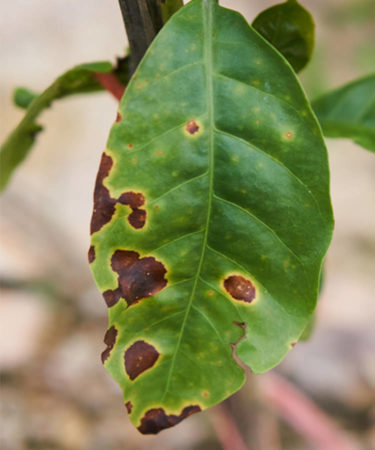A “devastating” disease is spreading across Central American coffee plantations and threatening global coffee supply, causing billions of dollars of damage, and costing millions of workers their jobs, NPR reports.
Known as coffee rust leaf disease, or coffee rust, the disease is caused by fungus Hemileia vastatrix, and has no known cure. While not killing plants outright, the disease chokes them of essential nutrients, causing a dramatic drop in yields. First symptoms include pale-yellow spots on leaves’ upper surfaces, which then expand into larger rings, turning bright orange, red, then finally brown. Leaves then usually die within a few years.
Seventy percent of Central America’s Arabica plants have been affected, resulting in $3.2 billion of damage to the industry, and 1.7 million lost jobs.
Speaking to NPR, Guatemalan producer and exporter Josué Morale said, “We are in the middle of the biggest coffee crisis of our time.” Further compounding the crisis are, “catastrophically low coffee prices,” Stuart McCook, the author of an upcoming book on the history of the disease, says.
The disease previously wiped out the coffee industry in Sri Lanka (then called Ceylon) at the end of the 19th century. It has since affected nearly all of the coffee-bean-growing countries of Asia, and Central and East Africa, and first arrived in Latin America in the 1970s.
While rust-resistant strains have been developed, the quality of their beans is considered inferior to those of the Arabica plant. Scientists are also warning that these strains are not a long-term solution, as the fungus is capable of evolving and overcoming resistant genes within “five to ten years.”
Coffee, and its nemesis, are always evolving.
